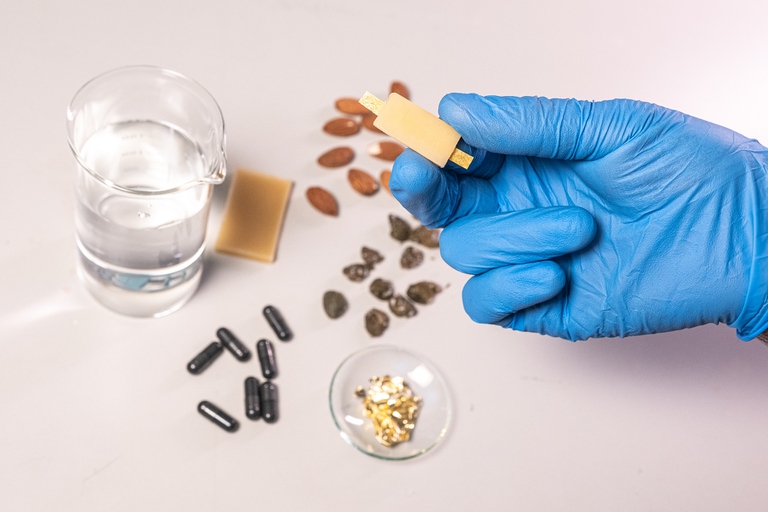https://www.lifegate.it/la-batteria-che-si-mangia-e-italiana-ed-e-stata-premiata-dal-time
- |
- The Italian Institute of Technology has created a pioneering edible battery:it is the world's first prototype of a rechargeable and edible battery.
- The applications of this innovative product range from the supply of energy to portable devices to the absorption of drugs within the human body.
- The edible battery was included by the US magazine Time among the best inventions of 2023.
Batteries and batteries they are very popular products that they power numerous devices for daily use.The small size and the metal components inside them represent a risk if ingested, but an Italian invention could eliminate this danger.A group of researchers from the Italian Institute of Technology (Iit) in Milan, detachment of scientific research center based in Genoa, he invented an edible battery which has the power to revolutionize applications in food quality monitoring, body health diagnostic tools, and future edible robots.The invention was awarded by the US magazine Time which included it in the list of the 100 best world inventions of 2023.

The future of edible electronics
Edible electronics are a growing sector aiming to produce digestible devices using only food ingredients and additives, thus overcoming many of the shortcomings of ingestible electronic devices.Edible electronic devices will have important implications for the monitoring of the gastrointestinal tract, for therapy and for rapid control of food quality.Recent research has demonstrated the feasibility of edible circuits and sensors, but making fully edible electronic devices requires edible energy sources, of which very few examples exist.Inspired by living organisms, the IIT group led by Mario Caironi has developed a rechargeable edible battery formed from materials consumed in daily life.
The battery is made immobilizing riboflavin and quercetin, common food ingredients and dietary supplements, on activated charcoal, a very popular food additive.Riboflavin is used as the anode, while quercetin is used as the cathode.By encapsulating the electrodes in beeswax, a completely edible battery capable of providing energy to small electronic devices has been created.The test battery operated at 0.65 V, sustaining a current of 48 µA for 12 minutes.The presented proof of concept will open doors to new edible electronic applications, enabling safer and simpler medical diagnoses and treatments, and unexplored ways of monitoring food quality.“The battery is currently designed to work outside the body and then be able to be eaten without any risk, for example for food monitoring.We are working on its miniaturization to be able to do so integrate into an edible pill for gastrointestinal monitoring.In this case the battery will be protected by the pill and will work until it is digested" explains Valerio Galli, first author of the reference paper.

The uses of the edible battery
“Potential future uses include edible circuits and sensors, capable of monitoring health conditions but also the state of preservation of food.Furthermore, given the high level of safety of these batteries, these technologies could also be used in the field of toys for younger children, where the risk of ingestion is high.In reality, we are already developing devices with greater capacity and smaller dimensions", underlines Mario Caironi, research coordinator.Ivan Ilic, co-author of the study, continues:“this edible battery is also very interesting for those who study and design energy accumulators.Building safer batteries, without the use of toxic materials, is a challenge we must face:While these batteries won't power electric cars, they are proof that making power sources with safer materials than current lithium-ion batteries is possible.We therefore believe that they will inspire other scientists to build safer batteries, for a truly sustainable future."There mention of Time confirms the interest in this revolutionary invention born in Italy.
